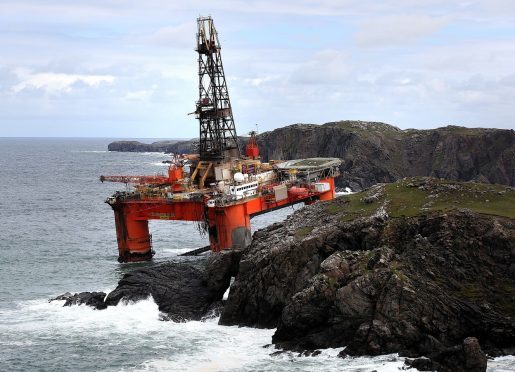Plans are being drawn-up to find a way to reinstate the west coast’s emergency tug without costing taxpayers any money.
Highland Council leader Margaret Davidson revealed the move as pressure continued to mount on UK ministers to bring back Scotland’s second emergency towing vessel (ETV).
The calls have been growing since the grounding of the Transocean Winner platform at Lewis this month.
Ten SNP politicians from the Highlands wrote yesterday to UK Transport Secretary Chris Grayling warning that the consequences of not having a second tug could be “absolutely catastrophic”.
The provision of the tugs was recommended by Lord Donaldson in his report into the sinking of the Braer oil tanker off Shetland in 1993.
The UK Government announced in 2010 that it was pulling the funding for the ETVs at Shetland and Stornoway – but was forced to partially back down and reinstate one of the tugs, based at Orkney.
Mrs Davidson said that the grounding of the Transocean Winner platform underlined why a second tug was required for the west coast.
She also revealed that behind-the-scenes talks were being held with Scottish and UK government agencies to try find a cost-free way to make it happen – by billing firms that require assistance from the tugs.
The local authority leader said: “Now they’ve got a graphic illustration of why we were talking about two tugs. It’s a hell of a distance from Kirkwall to Stornoway, and the Minch is very exposed.
“We’re also examining ways that we can make revenue.
“In places like Holland, where they have a whole suite of tugs along the coastline, the tugs pay for themselves. Every time a tug moves, someone pays for it.
“I think we’re looking at the legislation to see whether we can do something similar. I’ve got no problem charging whoever owns that rig through the nose for what they have done.”
She added: “We’re doing it with Marine Scotland and the marine coastal agency, MCA, and we’ve got a stakeholders working group that meets every three months or so.
“We’re part of that. I will admit we’ve really focussed it much harder in the last six to nine months. That’s where we went down the road of doing a risk assessment.
“The rig has proven all we ever needed.”
